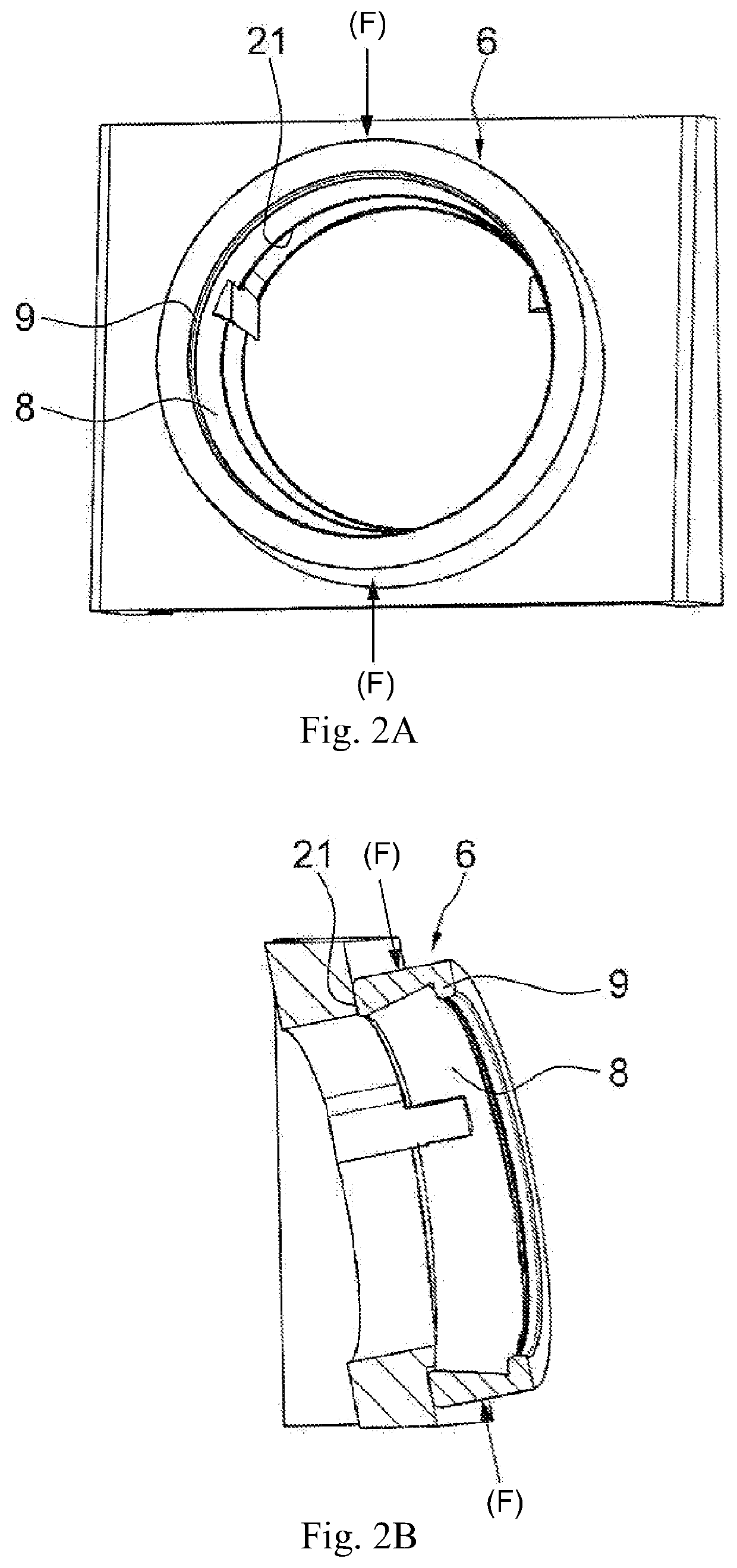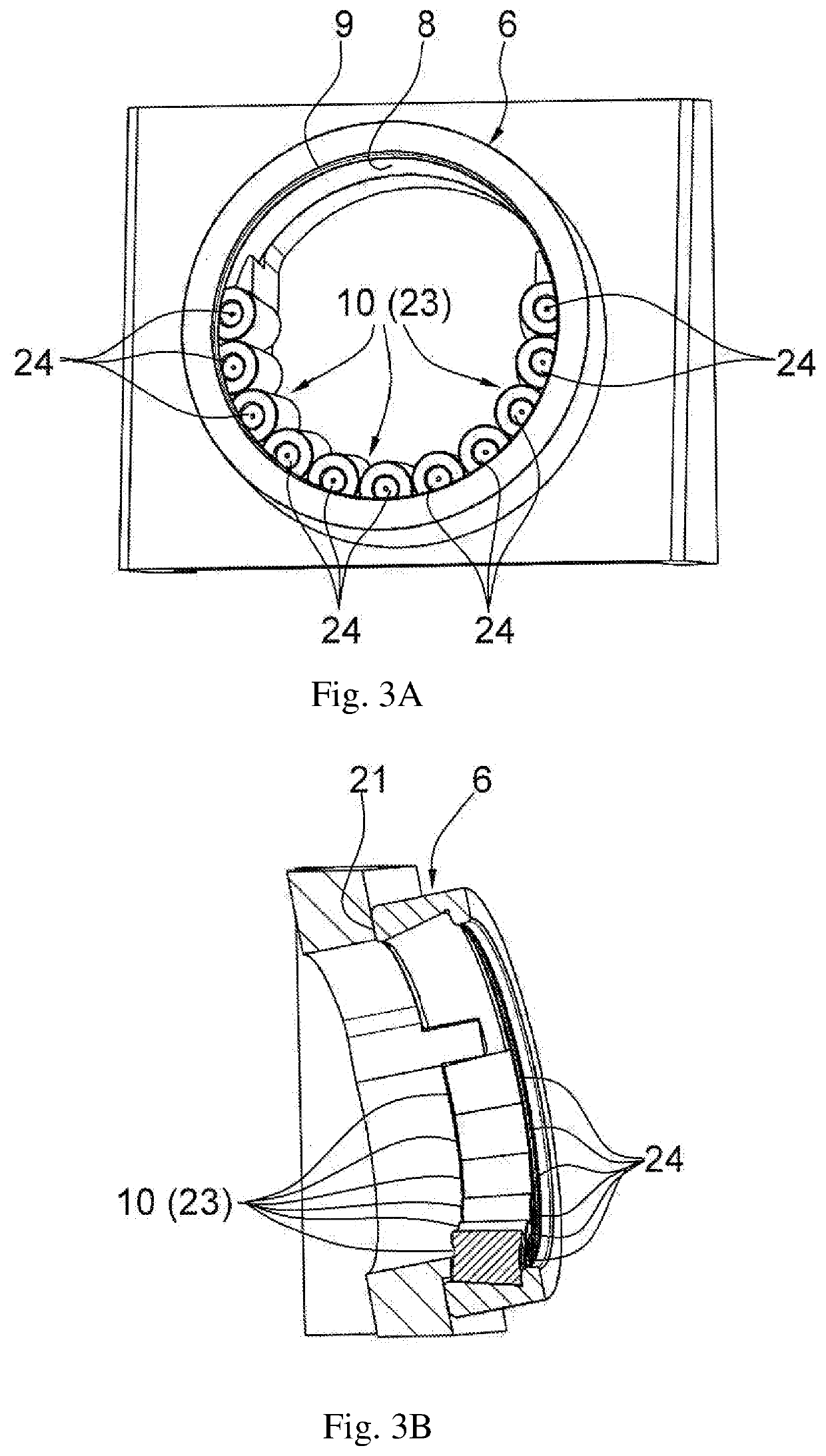Method and device for fitting an angular contact roller bearing
a technology of angular contact and roller bearing, which is applied in the direction of rolling contact bearings, shafts and bearings, rotary bearings, etc., can solve the problems of overdimensioning in terms of load capacity, high production cost of cylindrical roller bearings of this kind, and always subject to certain limits of deep groove ball bearings
- Summary
- Abstract
- Description
- Claims
- Application Information
AI Technical Summary
Benefits of technology
Problems solved by technology
Method used
Image
Examples
Embodiment Construction
[0040]FIG. 1 illustrates a cross section of a single-row angular contact roller bearing 1, which is suitable, for example, as a replacement for the hitherto used deep groove ball bearing for supporting the crankshaft in motor-vehicle internal combustion engines. As is clearly apparent, this angular contact roller bearing 1 comprises an inner bearing ring 2 having an inner race 4 arranged on the outer peripheral surface 3 thereof and inclined with respect to the bearing rotation axis AL, which is delimited at its smallest diameter by a rim 5, and an outer bearing ring 6 having an outer race 8 arranged on the inner peripheral surface 7 thereof and likewise inclined with respect to the bearing rotation axis AL, which is delimited at its largest diameter by a rim 9. A multiplicity of roller bearing elements 10, which roll on the races 4, 8 thereof and are held at uniform distances from one another in the circumferential direction by a bearing cage 11, are furthermore arranged between th...
PUM
 Login to view more
Login to view more Abstract
Description
Claims
Application Information
 Login to view more
Login to view more - R&D Engineer
- R&D Manager
- IP Professional
- Industry Leading Data Capabilities
- Powerful AI technology
- Patent DNA Extraction
Browse by: Latest US Patents, China's latest patents, Technical Efficacy Thesaurus, Application Domain, Technology Topic.
© 2024 PatSnap. All rights reserved.Legal|Privacy policy|Modern Slavery Act Transparency Statement|Sitemap



